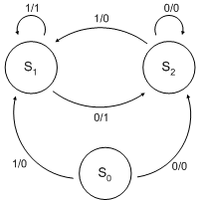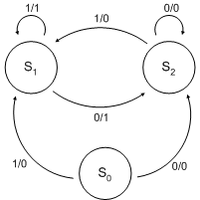Penerapan Komputasi
1. Penggunaan akun facebook, Twitter, Yahoo Messenger, Gmail, dll menggunakan teknologi Komputasi Cloud
Menurut NIST (National Institute of Standards and Technology) sendiri komputasi awan harus memenuhi 5 kriteria di bawah ini :
On-demand self-service – setiap orang bisa mendaftarkan dirinya sendiri tanpa bantuan siapapun, dan menikmati layanan sesuai kebutuhan
Broad network access – layanan komputasi awan bisa diakses dari manapun, dengan perangkat apapun
Resource pooling – semua sumber komputasi dikumpulkan dan dipergunakan bersama-sama
Rapid elasticity – setiap kebutuhan bisa dilayani secara elastik tergantung kebutuhan saat itu
Measured service – semua layanan bisa diukur (dan ditagih biayanya) sesuai dengan penggunaan aktual
Keunggulan komputasi awan ini adalah efisiensi yang sangat tinggi, apalagi jika menggunakan banyak data center tersebar yang berukuran sangat besar (bisa sampai ratusan ribu server per data center).
2. Huawei gunakan komputer virtual menggunakan teknologi Komputasi Cloud/Awan
Huawei berkomitmen untuk menyediakan aplikasi-aplikasi dan solusi-solusi infrastruktur terbaik di dunia untuk mendorong penggunaan aplikasi-aplikasi serta layanan berbasil awan. Dengan melibatkan 45 ribu orang teknisi kami yang semuanya menggunakan komputer virtual merupakan bukti kesiapan kami dalam menyediakan teknologi ini kepada pelanggan di semua industri, termasuk di Indonesia dan negara lain,” ungkap Li Wenzhi, CEO Huawei Indonesia.
Untuk memaksimalkan skalabilitas dan fleksibilitas yang dihadirkan oleh komputasi awan, Huawei memulai dengan memanfaatkan teknologi komputer awan ini di pusat penelitian dan pengembangan Huawei di Shanghai pada tahun 2009, dan hari ini, komputasi awan telah digunakan oleh lebih dari 45 ribu teknisi Huawei di seluruh dunia.
Dibandingkan dengan teknologi komputer konvensional, penggunaan komputer awan diperkirakan dapat memanfaatkan diperkirakan dapat menghemat 30 persen dibandingkan dengan investasi bisnis tradisional dan juga dapat mengurangi 73 persen konsumsi listrik, serta memaksimalkan fungsi CPU dengan peningkatan kapasitas dari 5 persen menjadi 60 persen. Waktu untuk pemasangan juga menjadi sangat efisien untuk komputasi awan yaitu dari sebelumnya tiga bulan menjadi satu minggu saja.
Para teknisi menggunakan program thin client agar bisa dengan mudah mengakses komputer virtual mereka kapan saja sehingga akan meningkatkan efisiensi kerja mereka. Berkat komputasi awan, data tidak lagi disimpan di setiap komputer melainkan pada server di pusat data awan.
3. Penggunaan Komputasi dalam Bidang Kedokteran
Salah satu contoh penggunaan komputasi adalah dalam bidang kedokteran, yaitu dalam pencarian obat. Untuk meramalkan aktivitas sejumlah besar calon obat, seorang praktisi komputasi meniru suasana pengujian aktivitasnya di laboratorium basah dengan model-model Kimia (seperti: struktur 3 dimensi calon obat) sebagai pengganti bahan-bahan laboratorium tersebut. Model-model ini kemudian dinyatakan di dalam persamaan-persamaan Matematika yang kemudian diselesaikan oleh komputer dengan kapasitas dan kelajuan yang melebihi kapasitas dan kelajuan manusia. Hasilnya berupa suatu bilangan bagi tiap calon obat yang dapat dibandingkan satu dengan yang lainnya. Perbandingan ini merupakan ramalan tingkat aktivitas suatu calon obat relatif terhadap calon obat lainnya. Demikianlah cara meramalkan aktivitas calon obat dengan metode komputasi. Dengan demikian, calon-calon obat yang diramalkan akan memberikan aktivitas yang rendah dapat dihindari.









